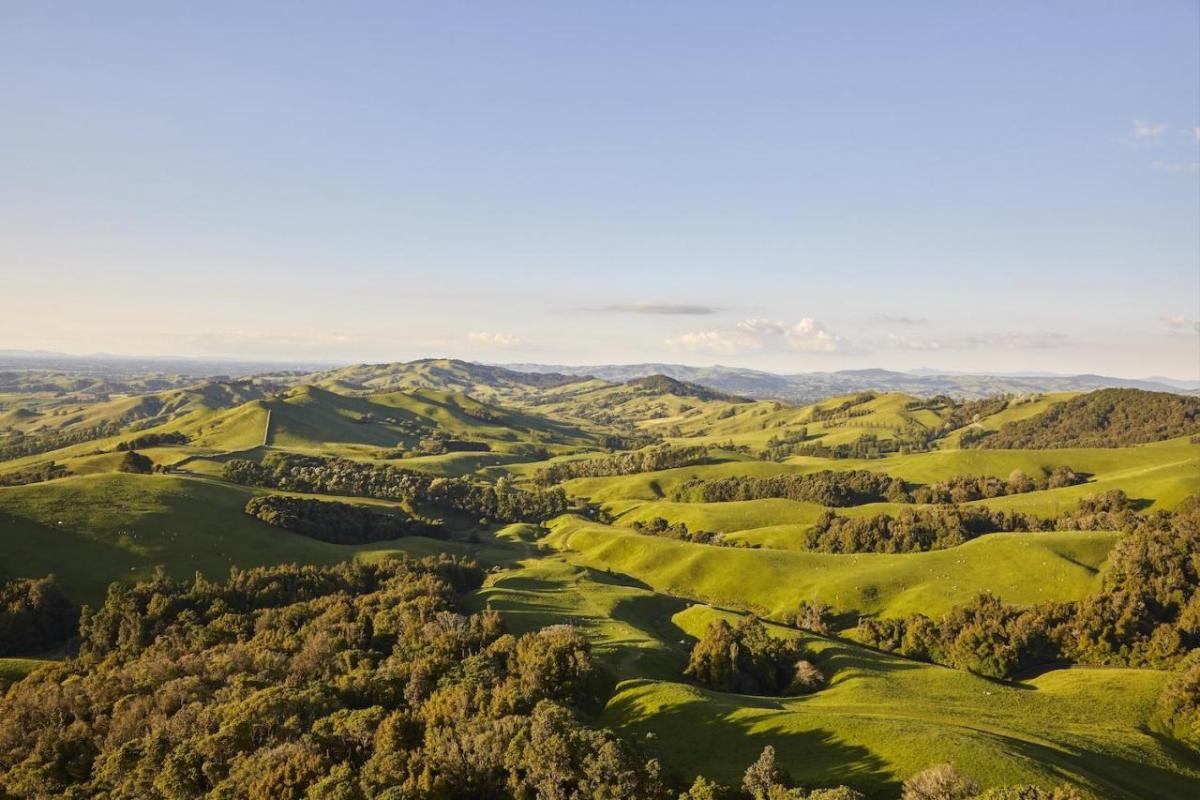Setting the Standard for More Sustainable Agriculture in New Zealand
Words by Kate Zerrenner

Originally published on TriplePundit
Red meat farming is not typically at the top of the environmental balance sheet. But farmers and policymakers in New Zealand are doing their best to change that, with government efforts like the world’s first tax on agricultural emissions and industry standards like the New Zealand Farm Assurance Program. Industry organizations, like Beef + Lamb New Zealand, work with farmers to implement sustainable agriculture methods that produce some of the world’s best beef and lamb, while also ensuring the health of their lands and environment for future generations.
So, what do the country’s sustainable agriculture standards and strategies look like, and what can the rest of the world learn from them? We spoke with leaders in New Zealand’s agricultural sector to find out.
Creating harmony with the land
Silver Fern Farms, a cooperative of 16,000 New Zealand sheep, cattle and deer farmers, is just one example of the export brands Beef + Lamb New Zealand works with that takes its stake in regenerative and sustainable agriculture seriously.
“New Zealand farm systems are built on understanding underlying natural capital and matching different types of animals in a grazing context to what grows on those farms,” said Matt Harcombe, sustainability manager at Silver Fern Farms. “We call that the grass curve.”
Put simply, the grass curve refers to how much grass is available for livestock grazing throughout the year, based on seasonality, biodiversity, and weather patterns like droughts and heat waves. Operating in alignment with the grass curve means farmers must pay close attention to a number of factors related to how their operations impact land and water ecosystems — including water quality and quantity, biodiversity, and soil health.
“Nature-positive [farming] resonates with us because it’s about looking after our soils, our pastures and our waterways,” said Jeff Cleveland of Brae-Lynn Farm, one of Silver Fern Farms’ supplier partners. “It’s about knowing the limitations of our farm and land, and farming within those limitations, not exceeding what it’s capable of.”
For example, Jeff and his wife, Diane, pay specific attention to propagating native trees on their property, which helps improve water quality and biodiversity as well as sequester carbon. Collecting and planting seeds from native tree species, such as Kopis (Cabbage trees), Lemonwood and Toe Toe, that grow well improves water filtration in low-lying wetland areas while attracting more native birds to the farm.
Jeff and Diane are also quite mindful of their soil health and haven’t cultivated the soil on their farm in 35 years. Rather, they direct drill which not only helps them conserve moisture on the property, but also ensures they retain enough organic matter in their soil to do so.
The couple’s strategy boils down to looking at the farm as a holistic ecosystem and understanding how that ecosystem fits together. It’s not just the animals they raise, but also the entire environment in which they raise them that creates a better-quality product and a more sustainable farm system.
The strategies behind sustainable farm management
While sustainable agriculture has inherently been imbued within Silver Fern Farms ethos, its formal approach to sustainability as we know it now commenced in 2016 and has ramped up in the last two years with a definitive sustainability action plan, including stringent nature-based and circularity targets for the company’s operations and supply chain, alongside a strong emphasis on transparency.
Many of the strategies that support suppliers to improve are based on what the Indigenous Māori people of New Zealand have practiced for centuries, “We are thinking about the long-term, 100-year vision and treading lightly on water, soil and restoring nature,” Harcombe said. “The Māori worldview is that we’re borrowing from the Earth. Our role is to give back and restore, very much in line with emerging and defined regenerative practices.”
Last year, Silver Fern Farms created the Māori development framework to further its implementation of Indigenous learnings. Staffed by long-term, in-house employees, this growing team looks to extend native knowledge of New Zealand’s soils and ecosystems out to a broader company approach to sustainability.
Leading by example
To do that, Silver Fern Farms discloses the full lifecycle emissions of the Net Carbon Zero meat products it produces — meeting international standards for carbon removals on participating farms and making direct payments to farmers to recognize and incentivize the role of vegetation in helping to mitigate the immediate impact of climate change.
“We want to create a halo of understanding around all of the aspects of sustainable red meat production,” Harcombe explained. “It must have integrity. We want to be super clear on what we have done, what challenges we have ahead and what we are doing and plan to do about them. We want to lead by doing.”
Scaling the use of robust sustainable agriculture standards helps to ensure New Zealand’s natural resources, including the lush rolling hills it’s known for, can be preserved for generations to come. “From a New Zealand farm context, deeply understanding your natural resources and their limitations and matching your needs to them so you can use fewer inputs over time, that means a happy environment and happy animals,” Harcombe said.
New Zealand may be uniquely placed to take advantage of abundant natural resources, a supportive regulatory environment and a powerful Indigenous voice, but leading by example may be the strongest factor in a nation of humble people. “Kiwis [or New Zealanders] don’t like blowing our own horn, and as farmers, we like to sit in the back corner,” Cleveland said. “But we need to start telling our story.” If their story is about teaching the world how to farm in harmony with the land, it is a story worth listening to.
This article series is sponsored by Beef + Lamb New Zealand and produced by the TriplePundit editorial team.
Image courtesy of Beef + Lamb New Zealand

